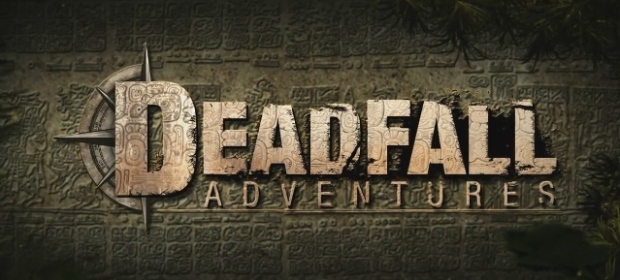Embarking upon an expedition in the hopes of finding that one big pay-off is a romantic idea. Movies have long mined this genre, and video games too are well aware of its appeal, with Tomb Raider and Uncharted being obvious examples. It is Uncharted which is the clear influence behind Deadfall Adventures. Where Uncharted followed Nathan Drake, ancestor of explorer Sir Francis Drake, Deadfall Adventures follows a very similar pattern. Gamers this time step into the shoes of James Lee Quatermain, Grandson of the fictional original tomb raider, Alan Quatermain. James is a reluctant hero – a mercenary treasure hunter who shies away from the legacy of his Grandfather.
That is until Jennifer Goodwin – an agent of the U.S. Government – asks for his help in obtaining a series of artefacts that could help protect the free world, and which must be kept away from the villains of the piece, the Nazis. In true Indiana Jones style, the game plays off Hitler’s real-life obsession with supernatural artefacts. So far, the story is very generic – being as hackneyed and unoriginal as you could imagine. This isn’t helped by uninspired dialogue that is delivered in a pretty lacklustre way. The story falls flat through this bad execution, and it certainly won’t grip you like the movies and books it is inspired by.
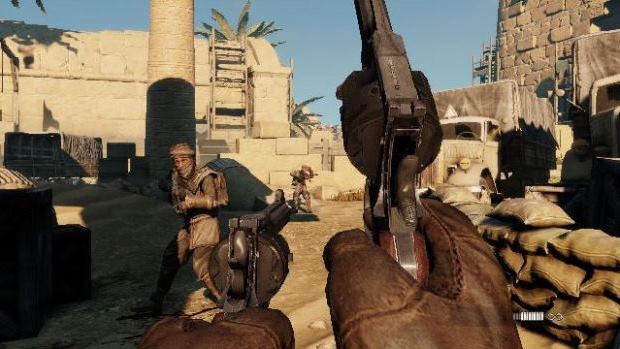
Gameplay is presented in a first person view, and attempts to combine the action of shooting and exploring with puzzle elements. It does feature a fair amount of jumping and basic platforming, which, as you can imagine, isn’t quite suited to the first-person viewpoint. Making inch-perfect jumps can be infuriating when you can’t see your feet , so be thankful that these sections are relatively few and far between. But this also becomes difficult when you realise that there are several puzzles where you must be careful where to step in order to stay alive. These become trickier when you don’t know where your feet are.
Sadly the gunplay isn’t strong enough to make up for this strange choice of viewpoint for an adventuring game. The aiming reticule is tiny to begin with, which makes detecting where you are shooting quite hard. Secondly, the movement of the crosshairs feels far too sensitive, making it hard to line up a shot exactly where you would like – your aim always moves a little too far one way or the other. Another strange design choice is that pressing left trigger to aim is a toggle rather than a snap on and off. When paired with some really extreme recoil on most guns (which is pretty authentic to the weapons, but unforgiving to gamers) it means that shooting too is a difficult skill to master, which it really shouldn’t be when gunplay comes into action so often.
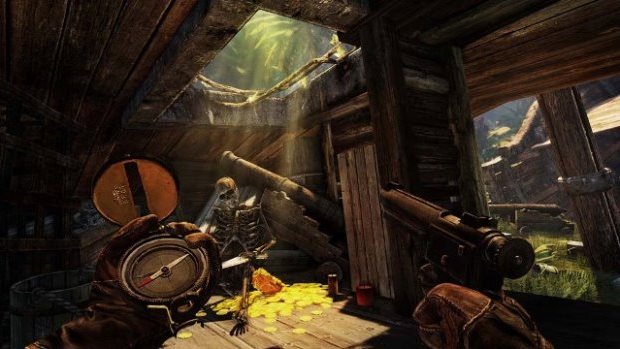
The puzzles help break up the monotony of shooting with difficult controls, coming in a variety of forms. Some involve turning mirrors to re-direct light around a room, crossing a room by jumping only on tiles that are safe, and some sliding tile or jigsaw puzzles. None of these become infuriating, and are all fairly easy to figure out. The traps can be quite tricky, as many treasures are booby-trapped to kill you once you take them, so you need to scope out the environment before you go running in. A nice feature for those who want to focus more on puzzles, or vice versa, is independent difficulty sliders for both puzzles and combat – so each player can customise the way the game plays to their tastes.
To make things more interesting, rather than just basic enemies and weapons, Quatermain also has to take on thesupernatural protectors of the tombs and relics. Largely, this comes in the shape of mummies and the like, who cannot simply be killed with bullets alone. This is where your trusty flashlight comes into play, which when charged up can burn enemies, making them susceptible to regular attacks. It is never explained how this skill works; it just does.
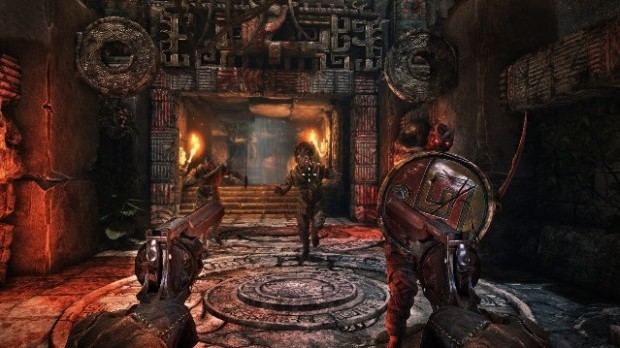
James also makes use of his Grandfather’s compass, which will direct you to treasure when it is close by. This is a good thing, as you need to collect as much treasure as possible to upgrade your skills and equipment. There are three skill paths, allowing you to increase stamina, health, your flashlight and reload speeds, among others. There are treasure maps to find on most levels that will show the approximate location of treasures, and how many are left. This should make it easier to find treasure, but the maps appear too small, and have too little correlation to the level design to be easily legible. The maps tend to confuse issues more than help them.
The final piece of equipment at your disposal is the diary of Alan Quatermain. This contains hints on how to tackle traps and puzzles throughout the adventure, in the form of notes and sketches that Alan put together in his adventures. Again, when the player equips the notebook, it appears too small to read properly, making it difficult to work out what the notes are trying to tell you. This is made worse by the fact that the in-game lighting effects your ability to read the notebook. Not facing a light? You won’t be able to read it as it appears too dark. Even if you find light, sometimes the game will still continue to cast a shadow over the notebook until you manage to stand up just so. This is a silly design choice, and badly hinders progression.
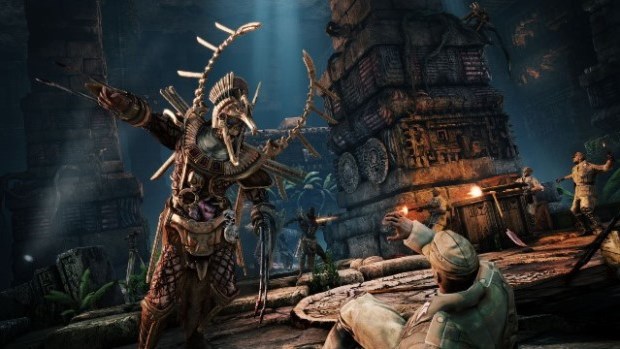
A selection of multiplayer modes are also present, which include basic and Team Deathmatches, but also several more interesting modes. First is Treasure Mode, where players race to recover artefacts, and then there is a co-op survival mode where players team-up to fight waves of enemies for as long as possible. The really unique feature is the inclusion of the “Gods”. The idea is that if you play well in multiplayer modes, the Gods reward you by transforming you into a mummy for a short while, allowing you to rampage, much like becoming a Tank in the versus mode of Left4Dead. This does help make the online modes a little more interesting, but obviously the same combat and navigation issues that plague the main game also drag down multiplayer.
VERDICT: Deadfall Adventures is based on an interesting concept, but simply doesn’t do anything well enough. The story is clichéd, badly delivered and far too derivative of games like Uncharted. The gameplay is irritating – let down by strange design choices and niggly control issues; sadly, what little the title does well is mired in these basic gameplay complaints. To make matters worse, the visual presentation is unimpressive and sparse – lacking any real detail and quality, and the audio adds nothing to the overall experience with by-the-numbers music and poor voice work. All of this results in a game that isn’t enjoyable to play, and has a story that isn’t likely to hold your attention.

POOR. Games tagged 4/10 will be playable, perhaps even enjoyable, but will be let down by a slew of negative elements that undermine their quality and value. Best avoided by any but hardcore genre fans.


